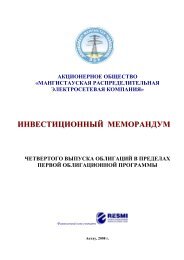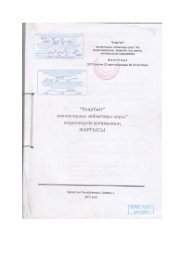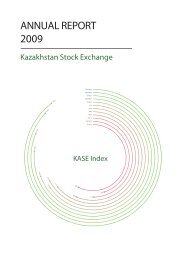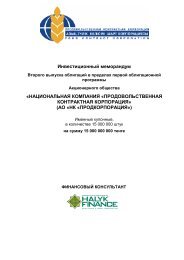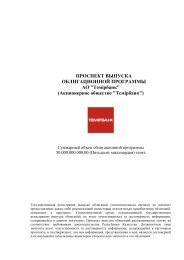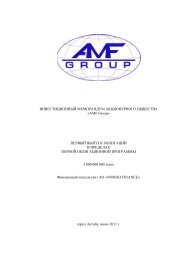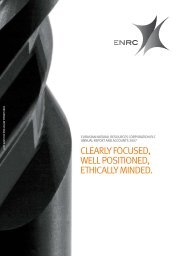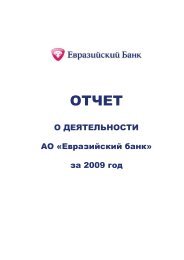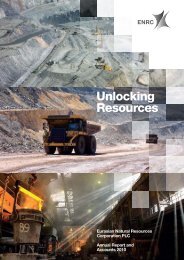JPMorgan - KASE
JPMorgan - KASE
JPMorgan - KASE
You also want an ePaper? Increase the reach of your titles
YUMPU automatically turns print PDFs into web optimized ePapers that Google loves.
There are certain differences between the full cost method of accounting for oil and gas assets as<br />
applied in Canada and as applied in the United States. The Corporation has reviewed such<br />
differences and determined that no variances in financial statement balances would have<br />
resulted from the application of full cost accounting in accordance with United States GAAP.<br />
Consolidated statements of income<br />
The application of United States GAAP would have the following effects on net income as<br />
reported:<br />
Years ended December 31<br />
2001 2000 1999<br />
Net income as reported in accordance with Canadian GAAP ................ 169,340 154,930 8,513<br />
Accounting for income taxes ........................................... (6,157) 19,061 (1,687)<br />
Amortization of debt issue costs ........................................ (540) (7,039) (324)<br />
Amortization of discount on debt ....................................... — (981) —<br />
Net income under United States GAAP ............................... 162,643 165,971 6,502<br />
Comprehensive income<br />
Foreign exchange translation adjustment ................................ (1,598) (6,111) (28,600)<br />
Total comprehensive income ........................................ 161,045 159,860 (22,098)<br />
Basic income per share under United States GAAP ......................... 2.04 2.35 0.15<br />
Diluted income per share under United States GAAP ...................... 1.94 2.26 0.14<br />
Stock based compensation<br />
The Corporation has a stock-based compensation plan as more fully described in Note 12. With<br />
regard to its stock option plan, the Corporation applies APB Opinion No. 25 in accounting for this<br />
plan and accordingly no compensation cost has been recognized. Had compensation expense<br />
been determined based on fair value at the grant dates for the stock option grants consistent<br />
with the method of SFAS No. 123, the Corporation’s net income and net income per share would<br />
have been reduced to the pro forma amounts as indicated below:<br />
Years ended December 31<br />
2001 2000 1999<br />
Net income under U.S. GAAP:<br />
Asreported .............................................................. 162,643 165,971 8,513<br />
Proforma................................................................ 161,409 157,791 7,563<br />
Basic earnings per share:<br />
Asreported .............................................................. 2.04 2.35 0.19<br />
Proforma................................................................ 2.02 2.23 0.17<br />
Stock options issued during period (thousands) ............................... 342 3,990 1,795<br />
Weighted average exercise price ............................................ 6.21 3.35 0.71<br />
Weighted average fair value of options granted during the period .............. 3.61 2.05 0.53<br />
The foregoing information is calculated in accordance with the Black-Scholes option pricing<br />
model, using the following data and assumptions: volatility, as of the date of grant, computed<br />
using the prior one to three-year weekly average prices of the Corporation’s Common Shares,<br />
which ranged from 52% to 124%; expected dividend yield—0%; option terms to expiry—4 to 5<br />
years as defined by the option contracts; risk-free rate of return as of the date of grant—4.86%<br />
to 5.96%, based on five year Government of Canada Bond yields.<br />
F-43




